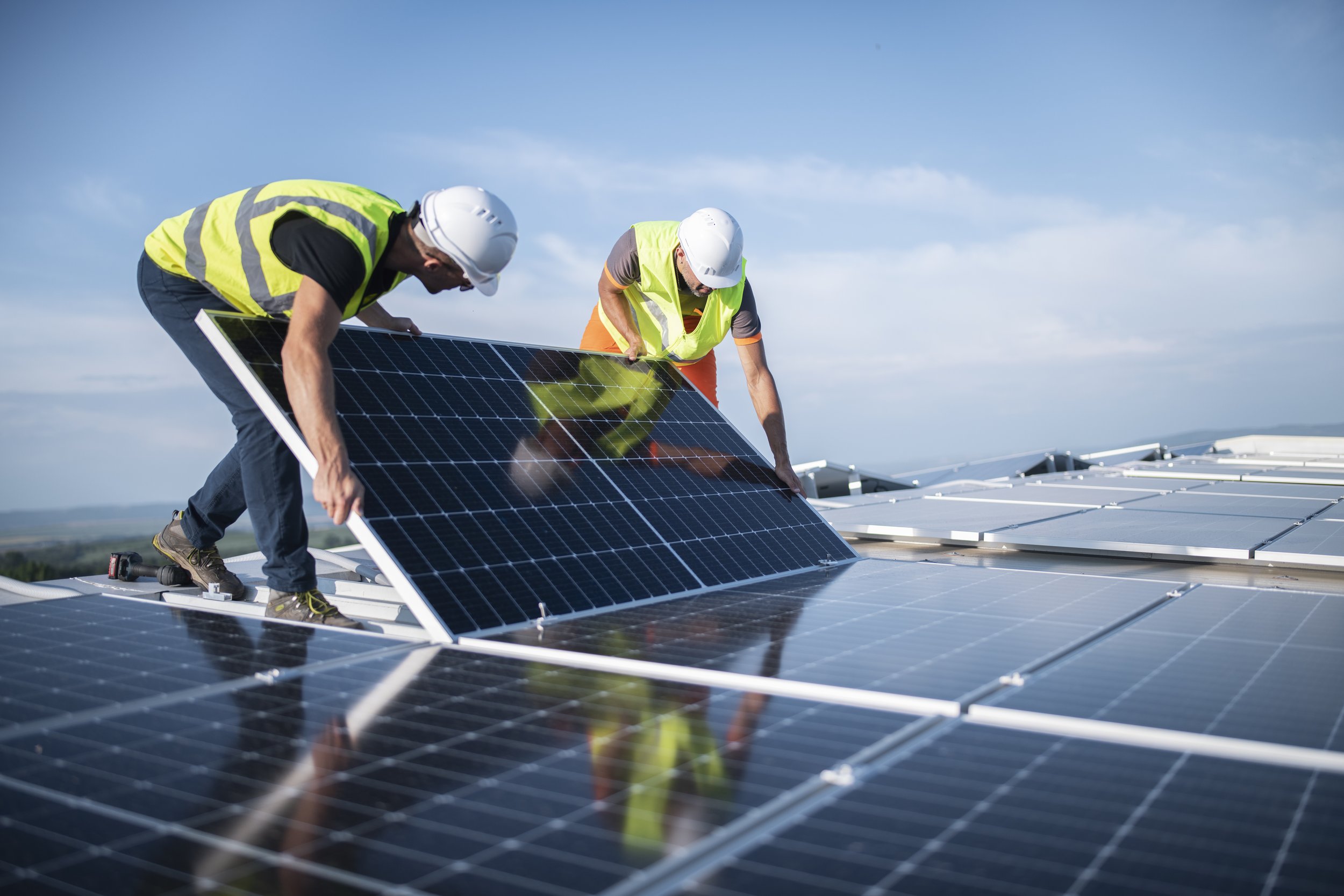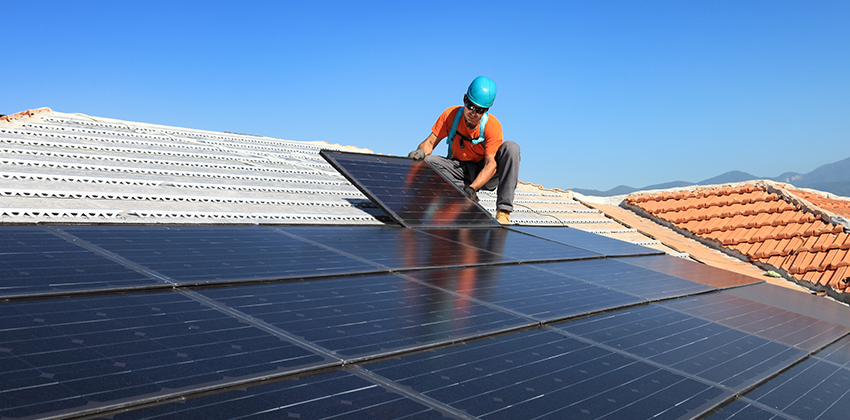Best Solar Panels: Renewable Energy Systems Harness Sunshine To Produce Clean Electricity For Houses And Businesses

Exploring the Kinds Of Solar Panels
When you dive into the world of photovoltaic panels, the range can seem like a sprawling garden with lots of distinct flowers. Each type carries its own charm, performance, and quirks. But what exactly makes one solar panel stand apart while another silently powers a remote cabin? Let's unwind this together.
Monocrystalline Solar Panels
Photo a smooth, black surface gleaming under the sun, each cell cut from a single, pure crystal of silicon. These are monocrystalline solar panels, frequently hailed for their exceptional efficiency and durability. They transform sunshine to electrical energy with excellent precision-- somewhere around 20% or more.
Why do they carry out so well? It's all about the pureness of the silicon. The uniform crystal structure allows electrons to flow more freely, producing a smoother current. But, like a rare vintage red wine, they come at a greater expense and need more energy to produce.
Polycrystalline Solar Panels
In contrast, polycrystalline photovoltaic panels look like a mosaic, composed of numerous silicon crystals melted together. You may notice their unique blue shade and somewhat speckled appearance. These panels are typically more economical and offer decent effectiveness, usually around 15-17%.
Imagine a dynamic city with numerous small neighborhoods-- this patchwork of crystals creates more borders that can a little restrain electron circulation. For numerous house owners, this balance between cost and efficiency strikes the sweet area.
Thin-Film Solar Panels
Then, there's the light-weight, versatile contender: thin-film photovoltaic panels. Made by layering photovoltaic material onto surfaces like glass or metal, they boast versatility and a streamlined profile. Here's the catch-- efficiency usually falls in between 10-13%, making them less typical for property rooftops.
Thin-film panels prosper in non-traditional spaces or where weight is a concern. Ever noticed solar-powered knapsacks or curved building exteriors? That's the magic of thin-film innovation. It challenges the conventional idea of what a photovoltaic panel should look like.
Comparing Key Attributes
| Type | Effectiveness | Appearance | Cost | Best Use |
|---|---|---|---|---|
| Monocrystalline | 18-22% | Black, consistent | Higher | High-efficiency needs, limited space |
| Polycrystalline | 15-17% | Blue, speckled | Moderate | Residential roofs, budget-conscious |
| Thin-Film | 10-13% | Varied, versatile | Lower | Versatile applications, big areas |
Selecting the Right Panel for You
Isn't it remarkable how the option of photovoltaic panels come down to more than just wattage? Elements like roofing area, budget plan, aesthetic choice, and energy goals weave together in this choice. I recall a good friend who chose polycrystalline panels after weighing the costs and their home's shading patterns-- often, functionality triumphs over eminence.
What's your perfect solar buddy? Could a monocrystalline marvel optimize your output, or will the cost-effectiveness of polycrystalline keep your wallet better? Or maybe thin-film's versatility sparks your creativity for a distinct installation. The sun's energy is plentiful; the question is how finest to harness it in such a way that suits your life's rhythm.
Unraveling the Mystery of Solar Panels
Ever wondered how a flat, glass-covered panel set down on your roofing changes sunlight into electrical power? The secret lies deep within the layers of photovoltaic cells, where sunlight triggers a dance of electrons, creating a circulation of electric present. This phenomenon, called the photovoltaic effect, turns solar power into functional power without a single moving part. It's practically poetic-- sunlight, caught and transformed quietly.
The Heart of the System: Solar Batteries

Each solar panel consists of many private cells made primarily from silicon, a semiconductor with an unique ability to take in sunlight. When photons strike these cells, they delight electrons, knocking them loose and setting them into motion. Picture a crowd unexpectedly rushing out of a stadium-- this electron flow is electrical power in its purest type.
Secret Elements and Their Roles
| Component | Function |
|---|---|
| Photovoltaic Cells | Convert sunshine into electrical energy |
| Glass Cover | Secures cells while allowing light to pass |
| Metal Frame | Provides structural support |
| Circuitry | Channels electric present to an inverter |
| Inverter | Transforms DC electrical power into air conditioning for home use |
Why Do Solar Panels In Some Cases Underperform?
Have you ever saw that your solar panels don't create as much power on certain days? The perpetrator isn't constantly cloud cover. Dirt, dust, or perhaps microscopic shading from leaves can disrupt the delicate circulation of electrons. Even small flaws can cause significant drops in performance-- consider it as a traffic jam in the electron highway.
Expert Tips To Make The Most Of Output
- Optimal Tilt and Orientation: Align panels to record the sun's maximum everyday arc, which varies by area and season.
- Temperature Awareness: Silicon's efficiency reduces as temperatures skyrocket. Installing panels with appropriate air flow can prevent overheating.
- Bypass Diodes: These tiny components assist keep power circulation even when part of the panel is shaded, preventing a domino effect of decreased output.
- Monitor System Efficiency: Using real-time monitoring apps can signal you to dips in production, making it possible for swift troubleshooting.
Beyond the Surface area: The Invisible Forces at Play
What's genuinely interesting is how the electric field ingrained within the solar cell layers directs electrons to stream in a single instructions, producing a usable existing. It's an unnoticeable force, akin to a hidden conductor leading a symphony of energy. Without it, the solar battery would be simply a piece of silicon indulging in the sun, doing nothing more than warming up.
In the end, understanding how solar panels work exposes a world where physics and nature team up effortlessly. So, next time you glimpse at those panels, remember-- there's a quiet, advanced process turning sunshine into the lifeblood of your home.
Unveiling the Environmental Virtues of Solar Panels
Ever paused to think about how a simple roof photovoltaic panel can rewrite the fate of our world? Harnessing solar energy isn't almost minimizing electricity costs; it has to do with weaving a cleaner, greener tapestry for future generations. The sun's rays hold a limitless guarantee, but using this prospective requires comprehending the deep ecological ripples brought on by traditional energy sources.
Why Solar Panels Outshine Standard Energy
Burning fossil fuels is like putting gasoline on a fire that's currently blazing. It releases lots of greenhouse gases that blanket the Earth, pressing worldwide temperature levels upward. Photovoltaic panel, in contrast, sip sunshine and convert it directly into power without any smoky residue. This shift considerably lowers carbon footprints, but the benefits do not stop there.
- Decrease in Air Pollution: Solar energy avoids emissions of sulfur dioxide and nitrogen oxides, infamous for triggering smog and respiratory problems.
- Water Conservation: Unlike coal or nuclear plants that guzzle large water amounts, solar panels run with minimal water, maintaining this precious resource.
- Reduced Environment Interruption: Thoughtful setup decreases land usage effect, securing ecosystems.
Anecdote: The Garden That Changed
Consider a neighborhood that transformed its neighborhood garden's solar-powered irrigation system. Not only did the plants love constant watering, however the clear skies above reflected a visible dip in local pollution. Homeowners reported fewer allergic reaction issues, a little but telling hint of solar's subtle environmental influence.
Specialist Tips for Taking Full Advantage Of Environmental Effect
- Orientation and Tilt: Line up panels to record optimum sunlight year-round, enhancing performance and lowering reliance on fossil backup sources.
- Material Choices: Choose for panels with high energy repayment times-- those that recover the energy used in their production rapidly.
- Integrate Energy Storage: Pair with batteries to smooth out supply changes, lowering dependence on grid power often produced from nonrenewables.
Beyond Emissions: The Ripple Impact
The ecological advantages of photovoltaic panels ripple through entire systems. By reducing air pollution, solar energy indirectly reduces climate-driven events like acid rain and extreme weather condition, which devastate farming and wildlife habitats. Can you think of a world where every roof was a tiny power plant, jointly healing the planet?
In the race against environment change, solar panels aren't just tools-- they are beacons of hope. They welcome us to reconsider energy, not as a commodity drawn out at a cost to nature, however as a gift from the sun, gathered sensibly and respectfully.
Installation Subtleties That Shape Performance
Picture establishing photovoltaic panels on a roof that tilts simply a couple of degrees off the optimum angle. That subtle tilt can equate into a significant energy loss over a year. Unlike the typical presumption that "any warm spot will do," the accurate orientation and tilt angle are pivotal. South-facing roofs in the northern hemisphere typically rule supreme, however even then, factors like shading from neighboring trees or chimneys can carve away at your panel's capacity.
Ever become aware of the "string mismatch" phenomenon? It's when solar panels wired in series experience unequal shading, causing one shaded panel to drag down the whole string's performance. To combat this, specialists frequently suggest microinverters or power optimizers instead of standard string inverters, specifically in complex roofing designs. These gadgets make sure each panel sings its own tune instead of getting hushed by a next-door neighbor's shadow.
Power Output and Inverter Positioning
Setting up an inverter isn't simply about slapping it on a wall somewhere. Location can influence heat buildup, which straight affects inverter performance and longevity. An overheated inverter may quietly siphon off your system's gains. Keeping the inverter in a shaded, ventilated, and easily accessible spot can conserve headaches down the road.
Likewise, the range Solar Energy For Home from solar panels to the inverter matters. Longer cable television runs imply more voltage drop, which discreetly chips away at your harvest of solar power. Utilizing thicker gauge electrical wiring can reduce this, but it includes upfront cost-- stabilizing these elements is a delicate dance.
Usage Insights: Maximizing Photovoltaic Panel Potential Daily
Have you ever wondered why your photovoltaic panels perform brilliantly on a cloudless early morning however appear less passionate in the afternoon? Temperature level plays a sly role here. While the sun's rays are more powerful midday, greater temperatures can reduce panel performance. This counterintuitive result implies that sometimes early morning or late afternoon sunshine can be remarkably productive.
To really harness solar power, think about these expert tips:
- Screen Energy Intake Patterns: Align high-consumption activities like laundry or dishwashing with peak solar production times.
- Battery Storage Placement: Install batteries close to the inverter and panels to reduce energy loss, and keep steady ambient temperature levels to preserve battery health.
- Routine System Diagnostics: Employ wise tracking tools that flag underperforming panels or inverter anomalies before they snowball into larger problems.
Weather condition's Function and Adjustments
Sudden weather condition shifts-- hailstorms, dust storms, or heavy snow-- can quickly change your system's output. Designing your setup with robust anchoring and angled panels helps snow slide off, while dust build-up can be lessened by choosing panels with anti-soiling finishes. Some installers even advise installing panels at angles surpassing the normal tilt to help with natural cleansing by rain.
Installation List for Optimum Solar Efficiency
| Consideration | Specialist Suggestion | Impact |
|---|---|---|
| Roofing Orientation | Measure azimuth angle exactly using a compass app | Maximizes sunlight absorption |
| Shading Analysis | Conduct a solar course research study throughout seasons | Avoids string mismatch and energy loss |
| Inverter Positioning | Pick shaded, ventilated location near panels | Improves inverter lifespan and performance |
| Wiring Gauge | Usage thicker cables for longer runs | Decreases voltage drop |
| Panel Tilt Angle | Adjust seasonally if possible | Enhances energy harvest throughout the year |